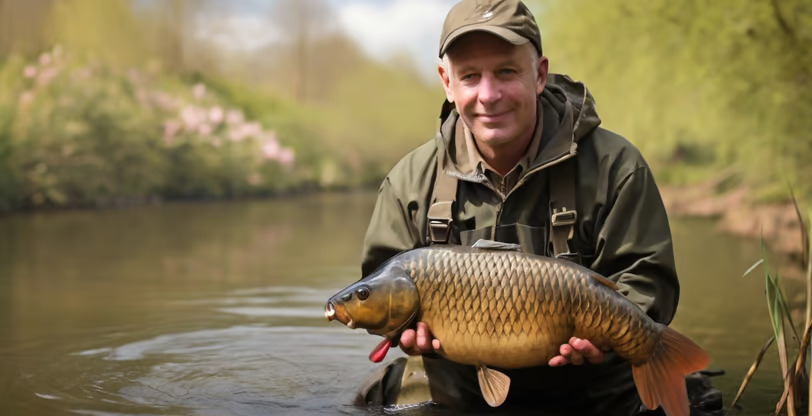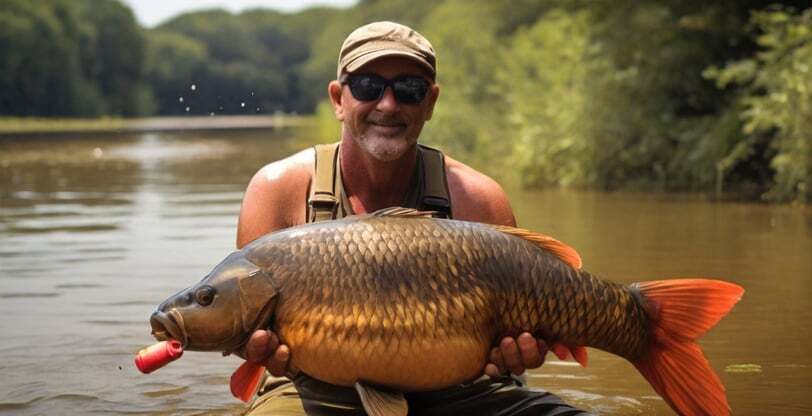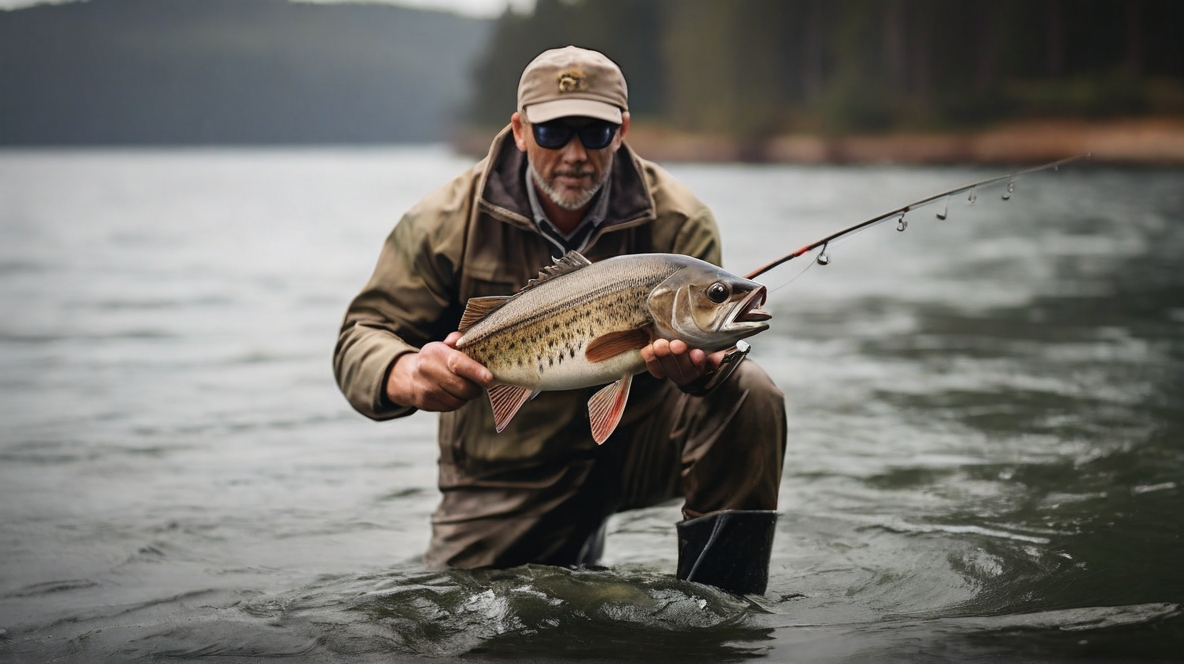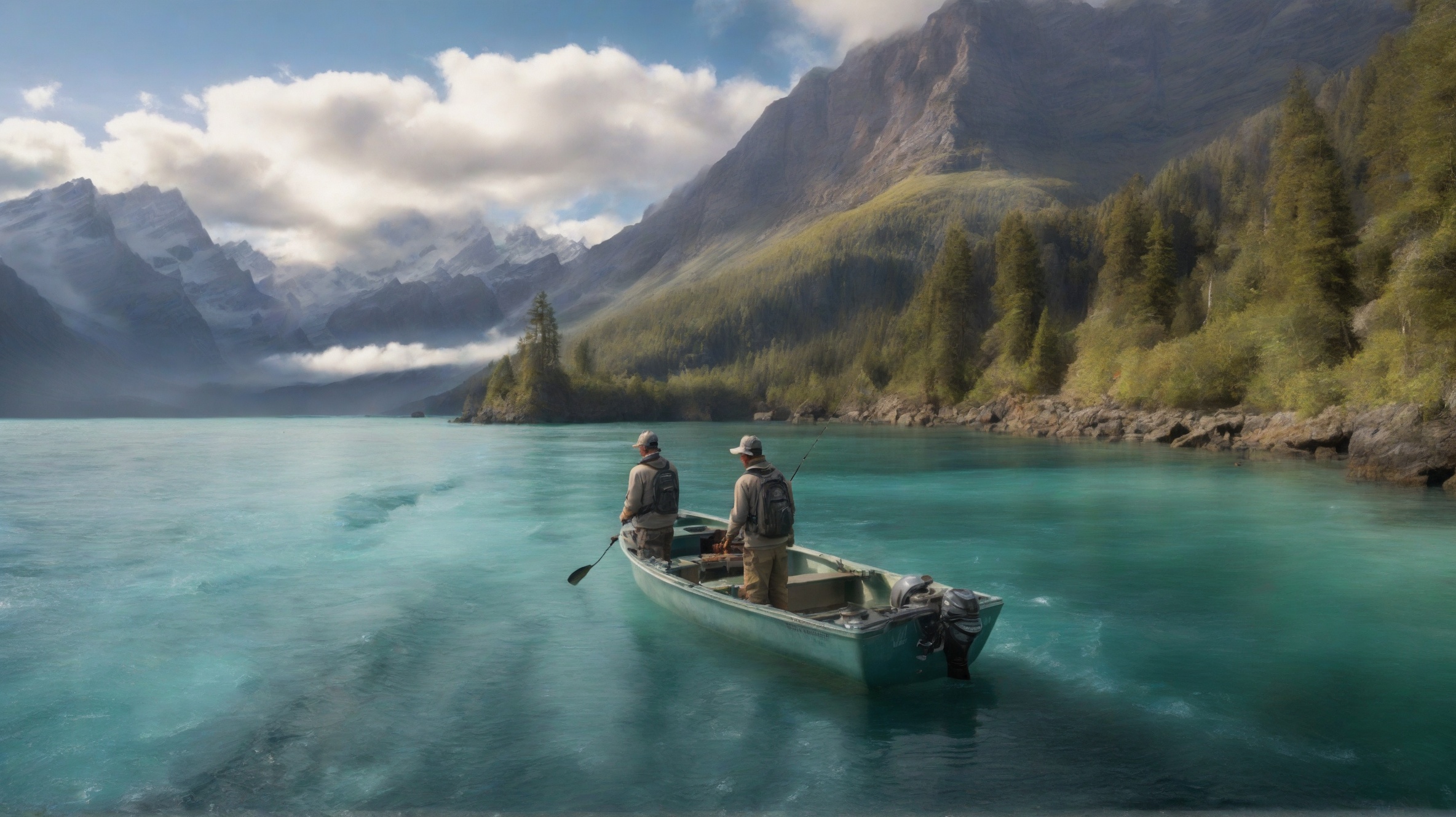Carp fishing is an incredibly rewarding hobby that can be enjoyed year-round. Whether you’re a seasoned angler or a beginner, understanding how to catch carp in all seasons is crucial to maximize your success. In this comprehensive guide, we’ll walk you through the essentials of carp fishing, with tips and strategies tailored to each season. From spring’s awakening to winter’s chill, you’ll learn how to adapt your approach and increase your chances of landing those elusive carp.
Carp Fishing in Spring: A Season of Opportunity

As winter’s chill begins to fade and nature awakens from its slumber, spring emerges as a season of tremendous opportunity for carp anglers. The warming temperatures and longer daylight hours trigger a surge in carp activity, making it an ideal time to cast your line and reel in these elusive freshwater giants. In this section, we will delve into the specifics of spring carp fishing, exploring the key factors that contribute to success during this season.
1. Location, Location, Location
When it comes to spring carp fishing, the old adage “Location, location, location” couldn’t be more relevant. Carp, like many fish species, are highly influenced by water temperature and weather conditions. As the sun’s rays gradually warm the water, carp become more active and begin their quest for food. Therefore, your first task is to identify the right locations where carp are likely to congregate during this season.
Shallow Waters: One of the primary locations to target in spring is shallow waters. As the sun penetrates the surface, these areas warm up quickly, attracting carp in search of insects, aquatic vegetation, and other sources of nourishment. Shallow bays, coves, and the edges of lakes and ponds are prime spots to explore. These areas often have a muddy or silty bottom, providing a natural habitat for carp to root around in search of food.
Transition Zones: Carp are also known to linger in transition zones during spring. These are areas where deeper water gradually slopes into shallower sections. Carp use these zones to move between their feeding and resting areas. Focus your efforts on these transition areas as carp often pause here to forage.
Windward Banks: On windy days, it’s a good idea to check the windward banks of your fishing spot. The wind pushes warmer surface water toward these banks, creating a slightly more comfortable environment for carp. In such conditions, carp may be more active along these windward shores.
Reconnaissance: Don’t hesitate to do some reconnaissance before your fishing trip. Carp are known to frequent specific areas within a body of water, such as submerged structures, gravel bars, or underwater vegetation beds. Local knowledge, online fishing forums, and maps of your chosen fishing location can provide valuable insights into where carp are likely to be found.
Avoid Disturbance: Once you’ve identified potential hotspots, be mindful of minimizing disturbance. Carp can be sensitive to noise and vibration in the water, so maintain a low profile and avoid excessive splashing or disturbances that could scare them away.
In summary, successful spring carp fishing begins with finding the right location. Focus on shallow waters, transition zones, windward banks, and areas with natural features that attract carp. Armed with this knowledge, you’ll be well on your way to enjoying a productive day on the water during the spring season.
2. Bait Selection and Presentation
Now that you’ve pinpointed the ideal locations for spring carp fishing, the next critical aspect to consider is your bait selection and presentation. Springtime sees a shift in the carp’s dietary preferences, and being attuned to these changes can significantly improve your chances of success.
Fresh and Vibrant Baits: As the water temperature rises, carp become more active and are drawn to fresh and vibrant baits. Some of the top bait choices for spring carp fishing include sweetcorn, bread, and boilies. These baits not only mimic the natural food sources that carp find during this season but also emit enticing scents that can attract carp from a distance.
Prebaiting: Prebaiting is a strategic technique often employed by experienced carp anglers. It involves introducing small quantities of your chosen bait into your fishing spot in the days leading up to your actual fishing session. This conditioning tactic can habituate carp to the bait and increase your chances of success when you finally cast your line.
Adjusting Bait Size: In spring, carp may be more receptive to smaller bait sizes. Consider using smaller boilies or pieces of sweetcorn to match their feeding preferences. Experiment with various bait sizes and monitor which one garners the most attention from the carp in your chosen location.
Rig Setup: The rig you use is crucial in spring carp fishing. A simple hair rig, where the hookbait is separated from the hook itself, can be highly effective. This setup allows the carp to take the bait without immediately feeling the resistance of the hook, increasing your chances of a successful hookset.
Floating Baits: Carp are known to feed on the surface during warmer spring days, especially in the late afternoon. Floating baits like floating sweetcorn or bread crust can be used to target surface-feeding carp. To further entice them, consider adding a few free-floating offerings to create a feeding frenzy.
3. Timing Is Key
Timing can make a significant difference in your spring carp fishing success. While carp are more active in spring compared to the colder months, they still exhibit specific feeding patterns that can enhance your chances of landing a catch.
Warmer Parts of the Day: Carp are more likely to be active during the warmer parts of the day in spring. Early morning and late afternoon are often prime times for catching them. Plan your fishing trips accordingly to coincide with these periods when carp are actively searching for food.
Weather Conditions: Keep a close eye on weather conditions, as they can impact carp behavior. Overcast days tend to be more favorable for carp fishing as the cloud cover reduces the visibility of predators and makes carp feel safer. If you have the flexibility to choose your fishing days, prioritize those with cloudy or slightly drizzly weather.
Moon Phases: Some anglers believe that moon phases can affect carp activity. While not scientifically proven, it may be worth experimenting with fishing during different moon phases to see if it makes a difference at your chosen location.
In conclusion, timing is a critical element of successful spring carp fishing. By fishing during the warmer parts of the day, paying attention to weather conditions, and considering moon phases, you can strategically increase your chances of hooking into carp during this season of opportunity.
Summer Carp Fishing: Beating the Heat

Summer is a season that often presents challenges to anglers pursuing carp. As temperatures soar and the sun beats down on the water, carp tend to become more cautious and selective in their feeding habits. However, with the right strategies and adjustments, you can still enjoy successful carp fishing during the hottest months of the year. In this section, we’ll explore the nuances of summer carp fishing and share tips to help you beat the heat and reel in these prized catches.
1. Go Night Fishing
One of the most effective strategies for summer carp fishing is to switch to night fishing. As the sun sets and the temperature drops, carp tend to become more active and comfortable in the water. Night fishing not only allows you to escape the scorching daytime heat but also puts you in prime position to target feeding carp.
Prepare Adequate Lighting: When embarking on a night fishing expedition, make sure you have sufficient lighting equipment to illuminate your fishing area. Headlamps, lanterns, and glow sticks can be essential tools for visibility and safety.
Adjust Your Schedule: Plan your fishing trips to coincide with the hours when carp are most active at night. Carp tend to feed more aggressively during the early evening and late night hours. Arriving at your fishing spot a couple of hours before sunset can give you a head start.
Select Night-Friendly Baits: Consider using baits that are particularly attractive to carp at night. Sweet, pungent, and oily baits can work well in low-light conditions. Boilies, flavored corn, and bait soaked in potent attractants are excellent choices.
Use Bite Alarms: To alert you to any action on your fishing line, invest in bite alarms. These devices emit a sound or light signal when a carp takes your bait, allowing you to respond quickly and make a successful hookset.
Stay Quiet and Stealthy: Carp have keen senses, including acute hearing. Be as quiet and stealthy as possible when setting up your fishing gear, moving around, and handling your bait. Avoid unnecessary noise that could spook the fish.
Safety First: Night fishing requires additional safety precautions. Always let someone know your fishing location and expected return time. Carry essential safety gear, such as a first-aid kit, insect repellent, and extra warm clothing in case the temperature drops during the night.
2. Fish Deeper
During the scorching days of summer, carp often seek refuge in deeper waters, where the temperature is cooler and more stable. This shift in their behavior means that you may need to adjust your fishing tactics to target these deeper-dwelling carp effectively.
Use a Fish Finder: Invest in a fish finder or depth sounder to locate the carp’s preferred depth. These devices can help you identify the right spot to set up your fishing equipment.
Adjust Your Bait Presentation: Since carp in deeper water may be more cautious, consider presenting your bait closer to the lake or riverbed. A method known as “zigs” involves suspending your bait at various depths in the water column to tempt carp at their preferred level.
Choose Dense Baits: In deeper water, opt for bait that sinks quickly and maintains its integrity. Heavier boilies, pellets, or dense particle baits can effectively reach the desired depth and stay on the bottom.
Consider Zig Rigs: Zig rigs are specialized setups designed for fishing at different depths within the water column. These rigs allow you to target carp wherever they are holding, making them a valuable tool for summer carp fishing.
Vary Your Depths: Experiment with different depths until you find the one where carp are most active. Carp may change their preferred depth based on water temperature and other factors, so be prepared to adjust your presentation accordingly.
3. Use Light Tackle
Carp in summer can be more cautious and easily spooked, requiring a more subtle approach when it comes to your fishing tackle. Lightening up your gear can make a significant difference in your success rate during this season.
Choose Lighter Line: Consider using lighter fishing line, preferably monofilament or fluorocarbon, as it is less visible underwater and offers more flexibility. A line with a breaking strength of 8-12 pounds should be sufficient for summer carp fishing.
Downsize Your Hooks: Smaller hooks, such as size 6 to 10, can increase your chances of a successful hookset. Carp in summer may be more delicate with their feeding, so a smaller hook is less likely to deter them from taking the bait.
Fine-Tune Your Rig: Adjust your rig to be more subtle and less obtrusive. Use a simple hair rig or a knotless knot to present your bait naturally. Avoid using excessive lead weights, which can be conspicuous in clear water.
Practice Patience: In the summer heat, carp may take longer to inspect and commit to your bait. Exercise patience and refrain from reeling in too soon. Allow the carp ample time to become comfortable with your presentation before attempting to set the hook.
Stay Concealed: Position yourself and your fishing equipment away from the direct line of sight of the carp. Carp are known to be wary of shadows and disturbances in the water, so maintaining a low profile is essential.
In conclusion, summer carp fishing requires anglers to adapt to the challenges posed by the season’s heat and the carp’s altered behavior. Embracing night fishing, targeting deeper waters, and using lighter tackle can significantly improve your chances of success during this time. By employing these strategies, you’ll be well-equipped to beat the heat and reel in carp even when the sun is blazing overhead.









